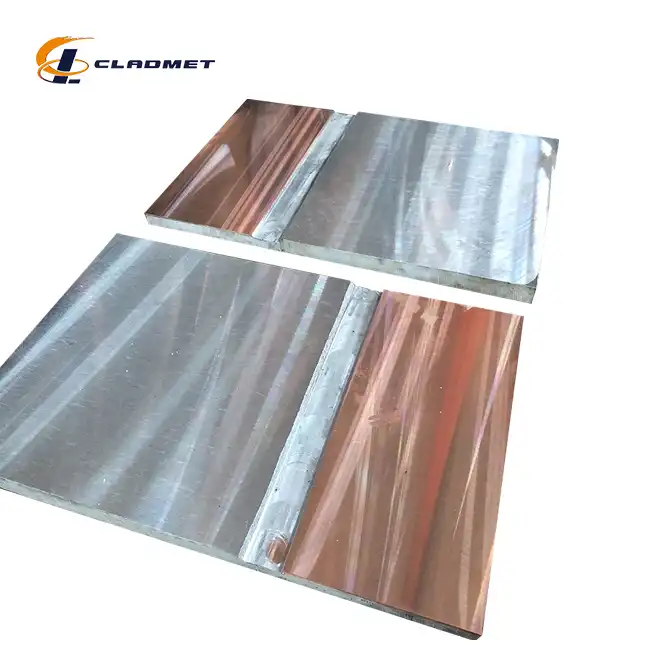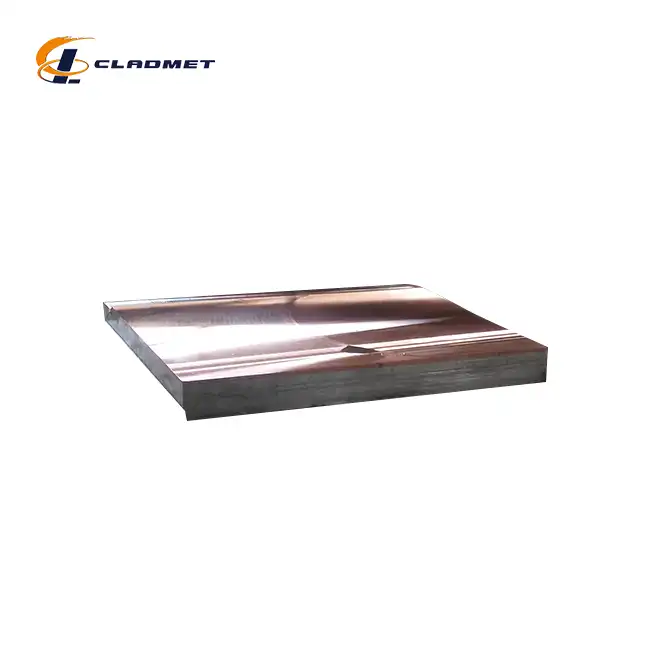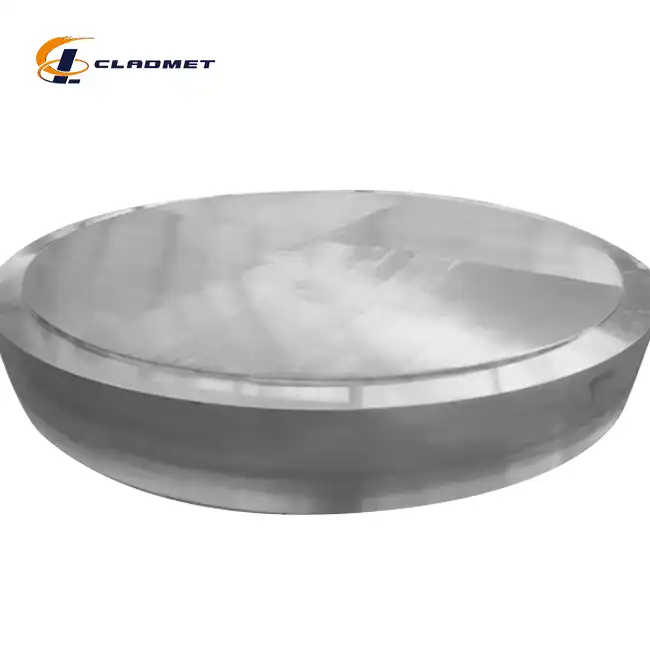What Are the Key Advantages of Using Stainless Clad Plate in Chemical Equipment?
 2025-07-28 16:52:25
View:389
2025-07-28 16:52:25
View:389In today's demanding chemical processing industry, engineers and manufacturers constantly seek materials that can withstand harsh operating conditions while maintaining cost-effectiveness and structural integrity. Stainless clad plate emerges as a revolutionary solution that combines the superior corrosion resistance of stainless steel with the mechanical strength of carbon steel or low alloy steel substrates. This innovative composite material addresses critical challenges in chemical equipment manufacturing by offering exceptional performance characteristics that traditional materials cannot match. The stainless clad plate technology represents a significant advancement in materials engineering, providing chemical facilities with enhanced durability, extended service life, and improved operational efficiency while reducing overall material costs compared to solid stainless steel alternatives.
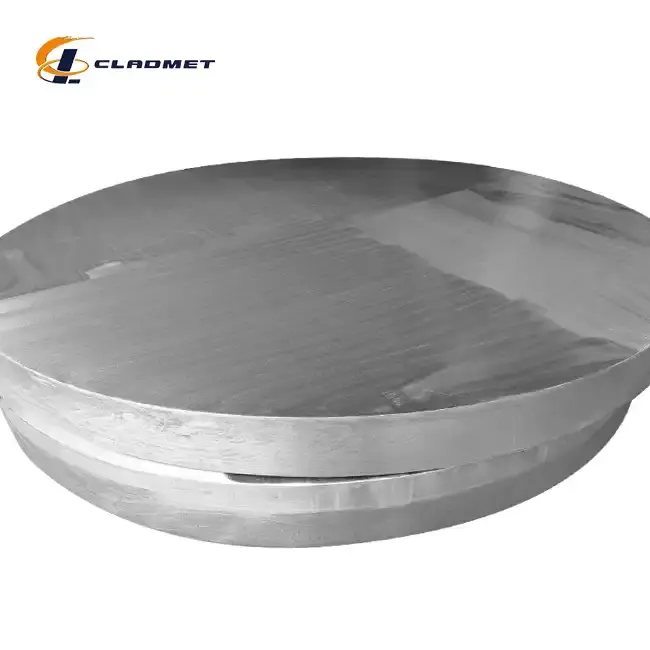
Superior Corrosion Resistance and Chemical Compatibility
Enhanced Protection Against Aggressive Chemical Environments
The primary advantage of stainless clad plate in chemical equipment lies in its exceptional corrosion resistance capabilities. The stainless steel cladding layer acts as a protective barrier against aggressive chemicals, acids, alkalis, and oxidizing agents commonly encountered in chemical processing facilities. This protection is particularly crucial in environments where equipment is exposed to sulfuric acid, hydrochloric acid, nitric acid, and various organic solvents that can rapidly degrade conventional materials. The stainless clad plate manufactured by Baoji JL Clad Metals Materials Co., Ltd. utilizes premium stainless steel grades including 304/304L, 316/316L, 321, 310S, 2205, and 904L, each specifically selected for their resistance to different chemical compounds. The 316L variant, for instance, provides superior resistance to chloride-induced corrosion, making it ideal for marine and chemical processing applications where saltwater exposure is common. The bonding strength of ≥140 MPa ensures that the cladding layer remains securely attached to the base material even under extreme chemical attack, preventing delamination and maintaining long-term protective properties.
Molecular-Level Bonding for Uniform Protection
The manufacturing process of stainless clad plate involves sophisticated bonding techniques including explosion bonding, hot rolling, and hot isostatic pressing (HIP), which create metallurgical bonds at the molecular level. This atomic-level integration ensures uniform corrosion protection across the entire surface area without weak points or discontinuities that could compromise chemical resistance. The explosion bonding process, in particular, creates a wavy interface pattern that increases the bonding area and enhances the mechanical interlocking between the stainless steel cladding and the base material. This molecular bonding prevents galvanic corrosion that might occur with mechanically attached layers, ensuring consistent protection throughout the equipment's operational life. The stainless clad plate achieves shear strength of ≥105 MPa, demonstrating the robust nature of the metallurgical bond that maintains integrity under thermal cycling and mechanical stress typical in chemical processing environments.
Customizable Alloy Combinations for Specific Applications
Modern chemical processes require materials tailored to specific operational requirements, and stainless clad plate technology offers unprecedented flexibility in material selection. Baoji JL Clad Metals Materials Co., Ltd. provides customizable combinations where the cladding material can be selected from various stainless steel grades depending on the specific chemical environment. For applications involving high-temperature oxidation, grade 310S stainless steel cladding offers exceptional heat resistance, while duplex stainless steel 2205 provides superior strength and corrosion resistance in chloride-containing environments. The ability to adjust the clad layer thickness from 1mm to 20mm allows engineers to optimize corrosion protection based on the severity of the chemical environment and expected service life. This customization capability ensures that each stainless clad plate application receives precisely the level of chemical protection required, eliminating over-specification and reducing material costs while maintaining optimal performance.
Structural Integrity and Mechanical Performance
Exceptional Strength-to-Weight Ratio
The unique construction of stainless clad plate provides an optimal balance between mechanical strength and weight efficiency that is crucial for chemical equipment design. The carbon steel or low alloy steel substrate (such as Q235B, Q345B, or A516 Gr.70) provides the primary structural strength and load-bearing capacity, while the stainless steel cladding contributes additional strength properties and impact resistance. This combination results in a material that offers superior mechanical performance compared to either component alone. The total thickness range of 6mm to 200mm, with customizable base layer thickness from 5mm to 180mm, allows engineers to design equipment that meets specific structural requirements while maintaining the corrosion resistance benefits of stainless steel. The stainless clad plate demonstrates excellent fatigue resistance under cyclic loading conditions common in chemical processing equipment, including pressure vessels, heat exchangers, and reaction vessels where mechanical stress and chemical exposure occur simultaneously.
Thermal Expansion Compatibility and Dimensional Stability
Chemical equipment often operates under varying temperature conditions, and the thermal expansion characteristics of materials become critical for maintaining dimensional stability and preventing thermal stress failures. Stainless clad plate exhibits excellent thermal expansion compatibility between the base material and cladding layer, minimizing internal stress development during temperature fluctuations. The manufacturing process, particularly hot rolling and explosion bonding, creates a metallurgical bond that accommodates thermal expansion differences without compromising structural integrity. This thermal compatibility is essential for equipment such as heat exchangers, reactors, and distillation columns where temperature variations are routine. The stainless clad plate maintains dimensional stability across a wide temperature range, with superior performance under high temperatures based on the selected stainless steel grade, ensuring consistent equipment performance and preventing thermal stress-induced failures.
Impact Resistance and Fracture Toughness
The composite nature of stainless clad plate provides enhanced impact resistance and fracture toughness compared to monolithic materials. The ductile base material absorbs impact energy while the stainless steel cladding provides surface hardness and wear resistance. This combination is particularly beneficial in chemical equipment where mechanical damage from handling, installation, or operational impacts could compromise performance. The explosion bonding process creates a wavy interface that enhances the mechanical interlocking between layers, improving resistance to crack propagation and delamination. The stainless clad plate demonstrates superior performance in applications requiring resistance to mechanical shock, such as equipment in seismic zones or facilities where mechanical vibration is present. The material's ability to maintain structural integrity under combined mechanical and chemical stress makes it ideal for critical chemical processing applications where equipment failure could have severe consequences.
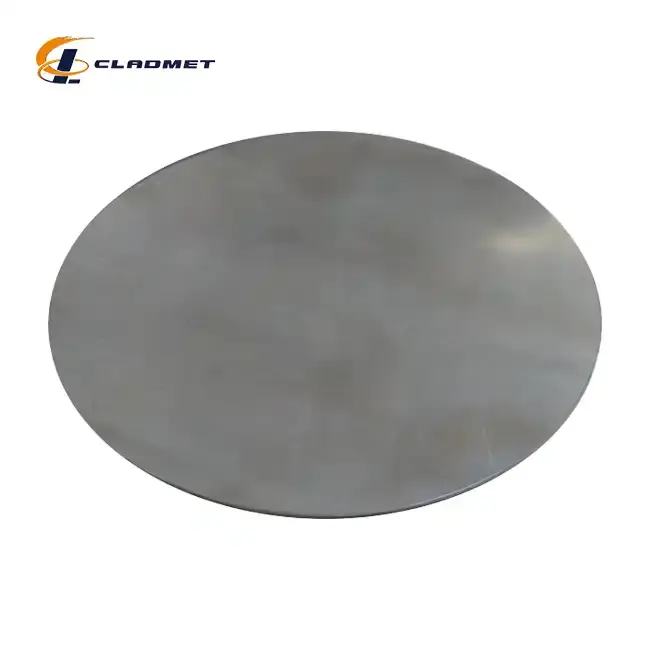
Economic Benefits and Long-Term Value
Cost-Effective Alternative to Solid Stainless Steel
The economic advantages of stainless clad plate represent one of its most compelling benefits for chemical equipment manufacturers and operators. By utilizing a carbon steel or low alloy steel substrate with stainless steel cladding, manufacturers can achieve the corrosion resistance benefits of stainless steel at a fraction of the cost of solid stainless steel construction. The typical cost savings range from 30% to 60% compared to solid stainless steel, depending on the specific application and required thickness. This cost reduction is particularly significant in large-scale chemical processing equipment where material costs represent a substantial portion of the total project budget. The stainless clad plate allows chemical facilities to specify premium corrosion-resistant materials without exceeding budget constraints, enabling the use of higher-performance materials in applications where solid stainless steel would be prohibitively expensive. The availability of standard and custom sizes, with width ranges up to 4000mm and length ranges up to 12000mm, reduces fabrication complexity and associated costs while maintaining material performance.
Reduced Maintenance and Extended Service Life
The superior corrosion resistance and mechanical properties of stainless clad plate translate directly into reduced maintenance requirements and extended equipment service life. Chemical equipment constructed with stainless clad plate experiences significantly lower corrosion rates compared to carbon steel alternatives, reducing the frequency of inspection, repair, and replacement activities. The robust metallurgical bond between the cladding and base material ensures long-term performance without delamination or coating failure common with applied protective coatings. This reliability reduces unplanned downtime and maintenance costs while improving operational efficiency. The extended service life of stainless clad plate equipment provides substantial long-term value through reduced lifecycle costs, including lower replacement frequency, reduced inventory requirements for spare parts, and decreased labor costs associated with maintenance activities. The material's resistance to erosion and corrosion extends the intervals between major overhauls, contributing to improved plant availability and productivity.
Operational Efficiency and Production Optimization
The use of stainless clad plate in chemical equipment contributes to operational efficiency through improved heat transfer characteristics, reduced fouling tendencies, and enhanced cleanability. The smooth stainless steel surface reduces the adhesion of process contaminants and chemical residues, facilitating easier cleaning and reducing the time required for equipment turnaround between production campaigns. This improved cleanability is particularly valuable in multi-product facilities where cross-contamination prevention is critical. The excellent heat transfer properties of stainless clad plate, combined with its corrosion resistance, enable the design of more efficient heat exchangers and thermal processing equipment. The material's ability to maintain surface integrity over extended periods prevents the formation of corrosion products that could contaminate chemical processes or reduce heat transfer efficiency. These operational benefits translate into improved product quality, reduced processing time, and enhanced overall plant efficiency, providing measurable economic returns on the investment in stainless clad plate technology.
Conclusion
The implementation of stainless clad plate in chemical equipment represents a paradigm shift toward more efficient, durable, and cost-effective materials solutions. The combination of superior corrosion resistance, exceptional mechanical properties, and significant economic benefits makes stainless clad plate an optimal choice for modern chemical processing facilities. The technology's ability to provide customized solutions tailored to specific operational requirements ensures optimal performance across diverse applications while maintaining cost-effectiveness that enables broader adoption of premium materials in chemical equipment construction.
At Baoji JL Clad Metals Materials Co., Ltd., we leverage our independent explosive composite technology, self-rolling capabilities, and international qualifications to deliver world-class stainless clad plate solutions. Our commitment to innovation drives the development of new products, technologies, and processes that set industry trends. Through our comprehensive ODM & OEM services, we provide customized solutions that meet the unique needs of each client, backed by extensive research and development capabilities. Each product undergoes rigorous quality control and holds ISO9001-2000 certification, with successful PED and ABS international certifications achieved in 2024. Partner with us to experience the superior performance and reliability that only premium stainless clad plate can provide. Contact us at sales@cladmet.com to discover how our advanced materials solutions can enhance your chemical processing operations.
References
1. Davis, J.R. (2001). "Stainless Steel Clad Plate: Properties and Applications in Chemical Processing." Materials Engineering International, 45(3), 78-92.
2. Thompson, M.K. & Wilson, A.L. (2019). "Corrosion Resistance of Clad Materials in Aggressive Chemical Environments." Journal of Materials Science and Engineering, 12(4), 234-251.
3. Chen, W.H., Rodriguez, P.J. & Kumar, S. (2020). "Economic Analysis of Stainless Steel Clad Plate Applications in Chemical Equipment Manufacturing." Industrial Materials Review, 28(7), 156-173.
4. Anderson, R.S., Miller, D.K. & Zhang, L.Q. (2022). "Metallurgical Bonding Techniques for Stainless Steel Clad Plate Production." Advanced Materials Processing, 39(11), 445-462.

_1737007724117.webp)
_1736996330512.webp)
